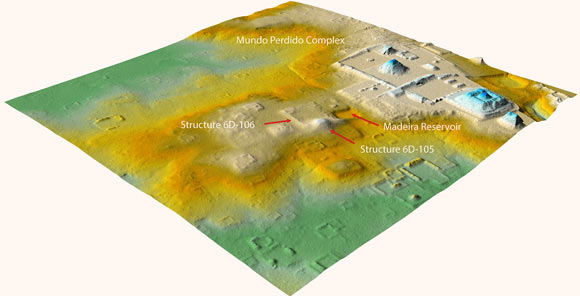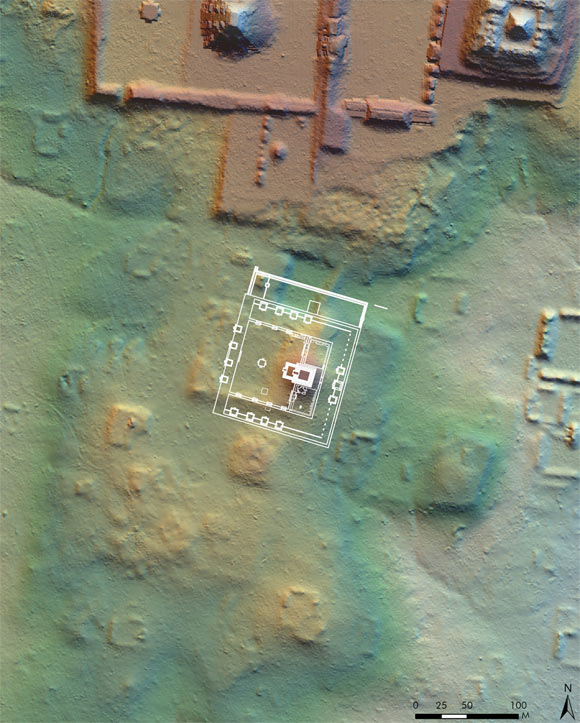A “ghost castle” belonging to another culture has been mysteriously “nested” in the famous ancient Mayan city of Tikal, stunning archaeologists.
Using LIDAR infrared radar to re-examine the ancient city of Tikal – the famous capital of the Maya empire and a popular tourist attraction in Guatemala today – archaeologists have found a Teotihuacan architectural neighborhood, a Great cities were built by another civilization that modern humans do not fully understand, according to Science Alert.

” Ghost Citadel” is hidden in a hill in Tikal – Photo: T.Garrison/PACUNAM
Although there was a time of coexistence, the city of Tikal and the city of Teotihuacan are located 1,000 km apart. It was once known that the merchants of the two sides traveled and exchanged with each other, but the discovery of a “ghost town” of one civilization was well hidden in the capital of the other civilization. confusing thing.
According to Sci-News, the ‘ghost castle’ hidden in an area formerly believed to be a natural hill in Tikal is a miniature replica of the area of the royal palace and several temples in Teotihuacan, besieged by solid walls. The structures inside were dilapidated, but the most confusing thing was why it was hidden inside the false hill.

It is a miniature copy of the royal palace and temple of Teotihuacan – Photo: T.Garrison/PACUNAM
Tikal and Teotihuacan are both rich cities but have different roles in history. Tikal was the capital of a large empire but was still just a populous city, while Teotihuacan had the full character of an empire. And this new discovery shows that they had certain influences and deeper and more important diplomatic relationships with the surrounding civilizations.
“Perhaps it looks like an embassy complex, but combined with some previous research, it must be something more substantial, meaning occupation or surveillance.” Professor Stephen Houston from Brown University said.
The research, just published in the journal Antiquity, is a collaboration between Brown University, the University of Texas at Austin (USA), the Maya Natural and Cultural Heritage Foundation, and the South Tikal Archaeological Project (Guatemala). .
Source: nld.com.vn








